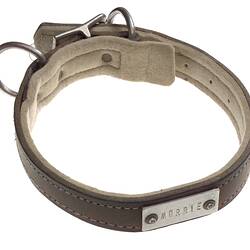Summary
Museum Victoria's Collection includes the Taxidermy Mounts of Morrie and Ursa two members of the last group of huskies used in the Australian Antarctic Territory. Huskies were used by the Australian Antarctic division from the establishment of Mawson Station in 1954 until 1991 when Australia signed an agreement to remove all dogs from Antarctica to reduce the impact of introduced species. The Antarctic huskies represent a key part of the working lives of people in Antarctica and also the shift to a new regime of environmental management of Antarctica.
Early uses of Dog Teams in Antarctica
Dogs were first used to haul loads in Antarctica by Borchrevink in the 1890s. Early British explorer Scott and Shackleton preferred to use ponies but the success of Amundsen with huskies led to their use being more widespread.
Huskies in Antarctica
Huskies are hard-working and loyal dogs and are well suited to Antarctic conditions. Their thick, double-layered fur coats keep them warm and having been bred in Greenland and Labrador, they are used to working in ice, cold and wind. In Antarctica they were primarily used to pull sledges; when attached to a harness huskies are able to haul 50-90 kilograms each. Huskies were also a valued source of companionship for the people working in the isolated and lonely conditions of Antarctic bases.
Australia's first Antarctic Huskies
Australia used huskies at Mawson station from its establishment in 1954. The first Australian huskies came from a group of Labrador and Greenland huskies intended to be delivered to Adelie Land in 1948-49 for a French base. Due to heavy ice, the ship delivering the huskies was unable to land and turned back to Australia. When quarantine officials refused to let the huskies stay in Australia, Phillip Law, the Director of the Antarctic Division arranged for them to stay at the Melbourne Zoo.
Next year, the huskies went to the French base, but Australia kept the pups that had been born, plus any unwanted adults, a total of 31 dogs. These dogs were transported to Heard Island in 1950 and to Mawson station in 1954. All of the Australian huskies came from this breeding stock plus three Greenland huskies acquired in 1963.
Huskies in the Museum's Collection: Morrie & Ursa
Morrie and Ursa were born in the same litter in September 1985. For most of their lives they were inseparable. They trained alongside one another and worked as a pair in the dog teams. Once, when both dogs escaped the station together, they were seen jumping over snow drifts in perfect unison. Along with other huskies they hauled equipment for expeditions along the Antarctic coastline, mostly for surveys of penguin rookeries near Mawson station. They did this for over six years.
Morrie was the larger dog and one of the hardest working on the station. He was also one of the best at escaping! Although a great favourite with expeditioners, many considered him the ugliest dog in Antarctica, his appearance not helped by losing his ears in fights with other dogs.
Leaner and lighter, Ursa was literally overshadowed by his brother. Although more easily distracted by wildlife and scent marks from other huskies, he was nevertheless just as hard a worker.
End of Australia's Antarctic Huskies
In 1991 Australia signed the Protocol on Environmental Protection to the Antarctic Treaty (the Madrid Protocol), Annex II of this agreement required all dogs to be removed from Antarctica to reduce the impact of introduced species. By this stage only Australia, Britain and Argentina still kept huskies in Antarctica.
In 1992 nineteen younger huskies and three pups were transported to a polar expedition training camp in Ely, Minnesota. This left six huskies too old to continue working, one of whom died in Antarctica. The dog's last run was a trip along the coastline to raise funds for Community Aid Abroad. In December 1993 the remaining Australian huskies were removed from Mawson station, although one passed away en route to Australia. Morrie was the last Australian dog to step off the continent.
After their return to Australia in 1994, Morrie and Ursa lived in retirement for over six years, with one of their former carers from Antarctica, making appearances at public shows to help raise awareness of the role huskies played in Antarctica. In the warmer environment of Victoria they also shed much of their thick fur! Morrie passed away on 4 February 2000 and Ursa followed a year and a half later on 3 October 2001.
More Information
-
Keywords
-
Authors
-
Article types




